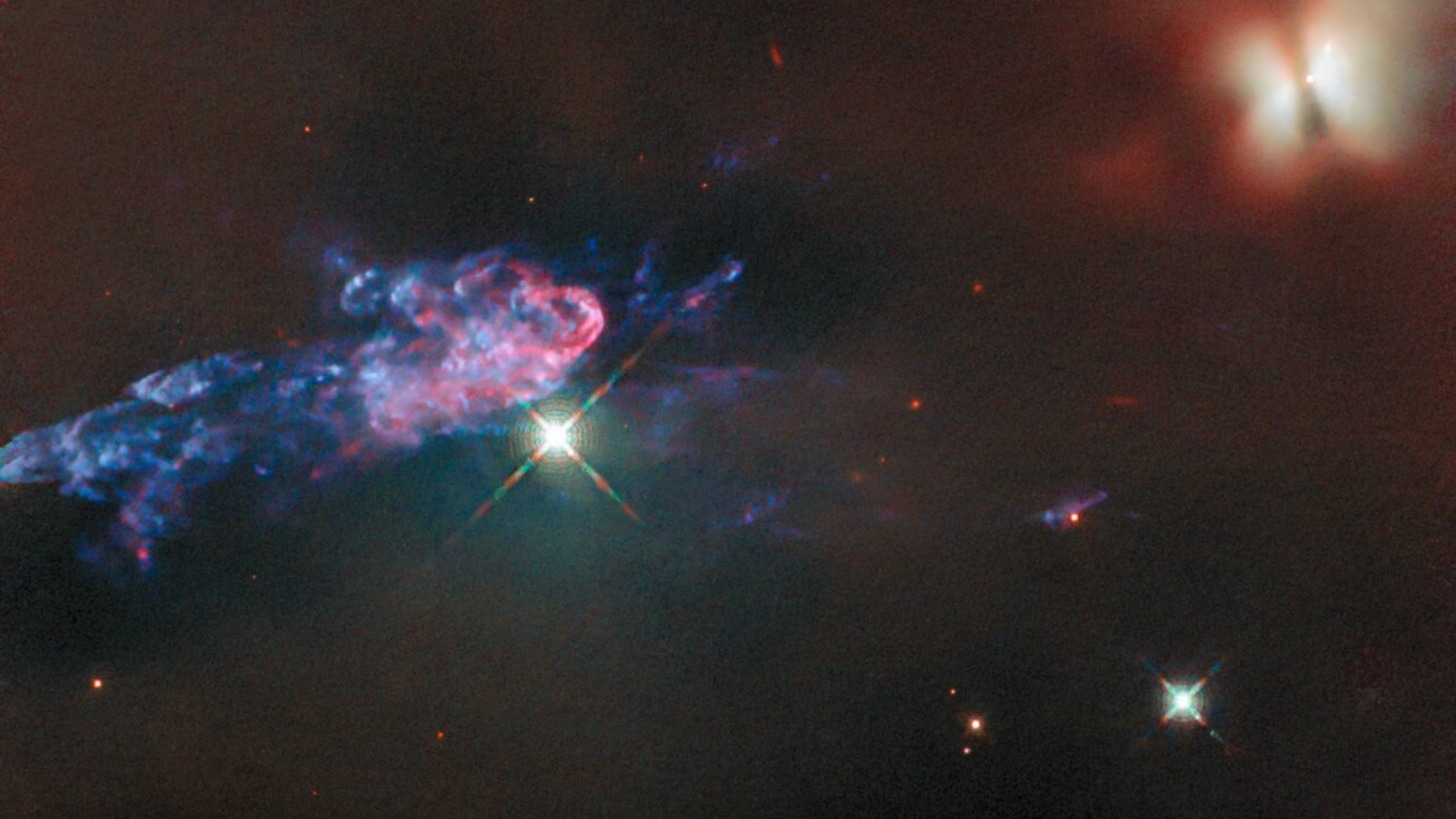The Gaia Mission’s Science Operations are Over
The ESA has announced that Gaia’s primary mission is coming to an end. The spacecraft’s fuel is running low, and the sky-scanning phase of its mission is over. The ground-breaking mission has taken more than three trillion observations of two billion objects, mostly stars. The ESA launched Gaia in December 2013. It’s an astrometry mission … Continue reading "The Gaia Mission’s Science Operations are Over" The post The Gaia Mission’s Science Operations are Over appeared first on Universe Today.

The ESA has announced that Gaia’s primary mission is coming to an end. The spacecraft’s fuel is running low, and the sky-scanning phase of its mission is over. The ground-breaking mission has taken more than three trillion observations of two billion objects, mostly stars.
The ESA launched Gaia in December 2013. It’s an astrometry mission that measures the positions, motions, and distances of stars with extreme accuracy. It created the largest and most accurate 3D map of space ever, including about one billion objects, mostly stars but also quasars, comets, asteroids, and planets.
Gaia’s mission lasted twice as long as expected, and its data has changed astronomy. It serves as the foundation for many new discoveries and insights into the Milky Way. Astronomy and astrophysics would be far behind where they are now if it weren’t for Gaia. Regular Universe Today readers have encountered its data frequently.
“Today marks the end of science observations and we are celebrating this incredible mission that has exceeded all our expectations, lasting for almost twice its originally foreseen lifetime,” says ESA Director of Science Carole Mundell. “The treasure trove of data collected by Gaia has given us unique insights into the origin and evolution of our Milky Way galaxy, and has also transformed astrophysics and Solar System science in ways that we are yet to fully appreciate. Gaia built on unique European excellence in astrometry and will leave a long-lasting legacy for future generations.”
Gaia hasn’t always had it easy at its position at the Sun-Earth L2 Lagrange point, about 1.5 million kilometres from Earth. In April 2024, a tiny micrometeorite smaller than a grain of sand struck, puncturing a tiny hole in the satellite’s protective cover. The hole allowed a tiny bit of sunlight into the spacecraft, disrupting its sensors. In May 2024, a solar storm struck, and it suffered an electronics malfunction that led to an inordinately high number of false detections. In both cases, Gaia recovered and continued normal operations.
Gaia has three instruments that allow it to be so accurate. Its astrometric instrument (ASTRO) determines the positions of stars in the sky. By measuring the same stars multiple times over different years, Gaia can measure a star’s position and proper motion.
Gaia’s radial velocity spectrometer (RVS) measures the Doppler shift of a star’s absorption lines. This reveals the star’s velocity along Gaia’s line of sight.
The photometric instrument (BP/RP) provides colour information on stars, allowing astronomers to measure critical stellar characteristics like mass, chemical composition, and temperature.
These instruments have worked together to create the largest and most accurate map of the Milky Way ever.

Among its other achievements, Gaia has captured pinpoint precision orbits of more than 150,000 asteroids, accurate enough to uncover possible moons. It also discovered a new type of black hole revealed only through its gravitational influence on nearby stars.
Though its science operations are at an end, it still has data to deliver.
“After 11 years in space and surviving micrometeorite impacts and solar storms along the way, Gaia has finished collecting science data. Now all eyes turn towards the preparation of the next data releases,” says Gaia Project Scientist Johannes Sahlmann.
“This is the Gaia release the community has been waiting for, and it’s exciting to think this only covers half of the collected data.”Antonella Vallenari, Deputy Chair of DPAC, Istituto Nazionale di Astrofisica (INAF), Padua, Italy.
Gaia’s Data Release 4 (DR4) is expected in 2026. The volume and quality of data have increased with each DR. DR 4 should contain 500 terabytes of data covering the mission’s first 5.5 years, corresponding to the length of the mission’s originally foreseen duration.
“This is the Gaia release the community has been waiting for, and it’s exciting to think this only covers half of the collected data,” says Antonella Vallenari, Deputy Chair of DPAC based at the Istituto Nazionale di Astrofisica (INAF), Astronomical Observatory of Padua, Italy. “Even though the mission has now stopped collecting data, it will be business as usual for us for many years to come as we make these incredible datasets ready for use.”
The data release will feature more binary stars and exoplanets, among other things.

Gaia’s final data release, DR5, is a few years away. “Over the next months we will continue to downlink every last drop of data from Gaia, and at the same time the processing teams will ramp up their preparations for the fifth and final major data release at the end of this decade, covering the full 10.5 years of mission data,” says Rocio Guerra, Gaia Science Operations Team Leader based at ESA’s European Space Astronomy Centre (ESAC) near Madrid in Spain.
Though the fuel that allows it to point itself with such accuracy is almost gone, Gaia won’t meet its demise just yet. It still has enough fuel for about 15 days of operations. Instead of using its final 15 days to take more astrometric measurements, it’s going to do some technology testing.
“The Gaia spacecraft has been constructed using a wide range of technologies which have been combined to create a unique machine that operates in a very stable environment,” the ESA explains. “The spacecraft’s stability is essential for the science observations. These technology tests would have disrupted the spacecraft for an extended period and, therefore, could not be performed during the normal science observation campaign.”
These tests will teach engineers more about Gaia’s instruments and will allow engineers to study their behaviour and the behaviour of the spacecraft as a whole. The goal is to improve the calibrations for future Gaia data releases. They will also inform the design of the next mission.
“Some of the Gaia technologies have already been re-used, for example the mirror-drive electronics and cold-gas thrusters on EUCLID,” the ESA writes. Other future missions like LISA will require extreme accuracy, and the results of these tests can help them achieve that.
Once its testing is complete, Gaia will be placed in a heliocentric orbit far away from Earth’s influence. At the end of March 2025, it will be passivated to avoid any potential harm or disruption to other spacecraft.
Though the mission will end, Gaia’s data will be used for decades. So, in that sense, it will live on.
The post The Gaia Mission’s Science Operations are Over appeared first on Universe Today.
What's Your Reaction?






























.jpg?width=1920&height=1920&fit=bounds&quality=80&format=jpg&auto=webp#)




















































